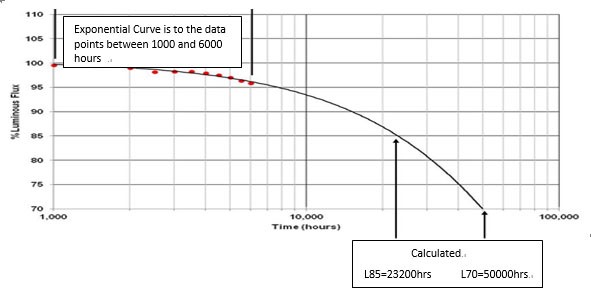Does using aluminum electrolytic capacitors in LED drivers shorten the lifetime of LED luminaire?
Viewers : 4394
David Wang / TWMW
Energy saving has been the topic drawing worldwide attention. The energy consumption from lighting is about 19~20% of the overall global consumption; if LED is the source of lighting, it sufficiently achieves the advantages of electricity saving and long lifetime. Therefore, the market of LED lighting has been vastly growing and fast replacing all kinds of conventional lighting in various kinds of application fields, such as household lighting, industrial lighting, business lighting, street lighting, automobile lighting, plant house lighting, etc. It is the most significant direction governments all over the world is move forward to for energy saving and carbon reduction policy.However, it has been a long-time open argument whether using electrolytic capacitors in LED drivers leads to a relatively low lifetime for luminaire. Generally speaking, LED driver solution is categorized into isolated type and non-isolated type. Due to safety concern, the majority of the customers select the isolated type LED driver and almost all of the LED drivers in market use electrolytic capacitors. MEAN WELL has been dedicated in research and development, with the adherence to high quality, for switching power supply. This article provides an in-depth discussion about the role the electrolytic capacitors play in LED drivers and their lifetime performance.
The role electrolytic capacitors play in LED drivers
Roughly speaking, from the application perspective, electrolytic capacitors for isolated LED drivers are divided into primary capacitors (Cp) and secondary capacitors (Cs) and both have the function of energy storage and filtering. Cp, for EMC solution, does not only absorb the surge energy and prevent flickers resulting from instantaneous power change but also lowers EMI; Cs on the output side is mainly used for filtering, lowering the low frequency current ripple and leading to the improvement for flickers. Many low wattage LED drivers in current market, in order to follow the power factor and harmonic current related norms and to meet the demand for low cost, adopt the single stage flyback without Cp or the PSR topology. The omission of Cp results in the need of additional components for surge test solution; on the other hand, with the output ripple, it cannot meet the demand for low flickers (the low frequency flux change rate is lower than 8%.)
LED luminaire lifetime factor
The key factors influencing LED luminaire lifetime are the electrolytic capacitors the light source and the driver use, which are directly related to temperature. The specified lifetime for current lighting units in market is as low as 15,000 hours and as high as 50,000 hours. According to the data provided from the major LED supplier, per LM-80 or TM-21 test, the average lifetime of general high power LED is 50,000 hours or so (the diagram hereunder is from Cree.) The lifetime of LED driver depends on the product level and temperature of the electrolytic capacitors; as a reasonable design practice, it is not supposed to be lower than the lifetime of LED.

MEAN WELL LED driver lifetime
MEAN WELL LED driver lifetime examination has been based on the test and calculation suggested by international well-known electrolytic capacitor manufacturers. Taking HLG-150H-24 as an example, the capacitor used on the output end is the highest level of electrolytic capacitor, 10,000 hours @105℃. The efficiency of HLG-150H-24 is up to 93% that when tested under the ambient temperature 60℃, the temperature rise of the electrolytic capacitors is low and below 80℃; based on the real test, the product life time is as high as 70,000 hours. If used under an ambient temperature 50℃, the lifetime is expected to further increase. As a result, whether using electrolytic capacitors for LED driver affects the luminaire’s lifetime does not matter. What is really important for enhancing the lifetime of the luminaire is, whether a LED driver exploiting high efficiency circuit topology and utilizing high quality electrolytic capacitors is selected.
